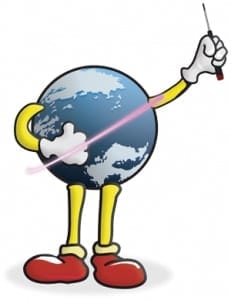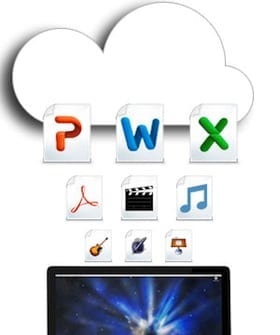 While providing the utmost in Technical assistance at OWC, we often hear the same question multiple times.
While providing the utmost in Technical assistance at OWC, we often hear the same question multiple times.
Below, we’ve compiled some of the most frequently asked questions from our Tech Support FAQ page. Hopefully, these will help you spend less time getting things installed (or configured) and more time using your new OWC goodies!
Question 1: Why can’t I select/find my new hard drive on the Mac OS install screen?
A brand new hard drive will need to be formatted to create a volume before you can install the operating system.
- From the “Select a drive to install Mac OS on” screen, go to the top menu bar and click on Utilities, launch Disk Utility.
- In Disk Utility you should find the new hard drive listed on the left by it’s capacity and manufacturer. Click on the new drive and click on the tab named Partition to format it. Under Partition, change the Scheme from “Current” to “1 Partition”, name the volume and leave the other settings as they are (default; recommended for your computer).
- Finally, click on Apply (may say Partition on older OS versions). There will be a moment of loading the settings and when that is finished you may close Disk Utility and select the new named volume to install onto.
Question 2: Why is my new memory upgrade not found in my Mac?
The first step is to make sure the memory is installed and seated all of the way. This is the most common solution to having a problem with memory. If you are unsure of how to install the memory properly you can see our install videos. You can also get installation instructions from Apple’s site, in their Support center.
With new memory, a common problem is that people do not realize the chips take some pressure to push in and fail to put them in all the way. Even if your old chips do not take as much force to insert, new chips can take a fair amount more force on them to get them to snap fully in to place properly.
When inserting the memory you will usually be able to tell when the memory fully seats in the socket and normally will hear a clicking/snapping type sound as it does.
For further troubleshooting on this topic, please see the full article in our support site.
Question 3: RAID 5 offers both redundancy and speed. Why don’t you recommend doing RAID 5 for tasks such as video editing?
When capturing video, consistency and speed are required to avoid dropped frames. While RAID 5 arrays can hit up to 200 Mb/s during transfer, it doesn’t tell the full story. During sustained transfer, parity checking is going on. When this happens it can cause the transfer rates to drop down severely for a millisecond. This doesn’t show up in the overall benchmarking, but it can cause dropped frames during video transfer/capture. This is why striping(RAID 0) is recommended; there is no parity checking happening in the background and the transfer rates stay consistent throughout.
Note: If you choose RAID 0 as your preferred configuration, remember that you may need to consider a backup solution to use with it.
Question 4: How do I properly condition my NewerTech laptop battery for use?
This can be broken down into three simple steps:
- Initial Charge – Fully charge the battery overnight using your computer’s AC adapter.
- Completely Discharge Battery – When the initial charging is completed, unplug the AC power from your notebook and allow it to run until it has drained the battery completely.
- Recharge Battery – Once your computer has fully discharged the battery and will no longer wake from sleep mode, plug the AC adapter into it and allow the computer to fully charge the battery again.
More detailed instructions for conditioning your NewerTech NuPower battery can be found on our Web site.
Question 5: Installed a optical drive, but how do I open/eject the tray?
Apple’s desktop machines such as the Power Mac G5 or Mac Pro have a built-in door mechanism that reveals the optical drive tray when ejected. You may find that a new optical drive has a faceplate/bezel on the end of the tray that will literally need to be popped off before installing. Otherwise, the tray’s bezel will obstruct the tray when it reaches the Mac’s own optical tray door.
To set up an eject icon on your Menu bar:
- Navigate to this folder on your hard drive: MacintoshHD > System > Library > Core Services > Menu Extras
- Grab the Eject.menu folder and drag it to your menu bar.
- Once you let go of the mouse button, the Eject icon will appear as shown.
If you click on the Eject icon, you’ll see you can now open and close your new drive with the menu bar item. Pretty cool! And it gets even better if you have a system with two internal drives; it will show both mechanisms and you can choose which one to open. Unfortunately, this menu won’t work with external devices.
That’s our Top 5 FAQs for Spring 2010! Stay tuned for the Summer edition where we will cover some questions based on software and some of the most advanced Mac and PC upgrades available from OWC!










I will have a removed optical without power with a stuck DVD.How can I manually eject?
Hello Bradley – excellent tips! Option-eject is certainly an easier way to eject the secondary drive. Many users are unaware they can throw the icon onto the menu bar.
As for using RAID 5 with video, the note is pertaining to actually editing/capturing video onto a RAID 5. At first glance, redundancy and speed in one array would appear excellent for this work. However, parity checking is going on and that can lead to dropped frames. You CAN use RAID 5 as you wish, however it is recommend that those who want to capture or edit video on to a RAID system consider an array that has no parity checking or background work that can effect the file transfer.
Option-eject also works for ejecting the 2nd optical drive tray. And just double-clicking on the eject.menu item will load it into the menu bar. That shortcut will be shown in the menu if there is a second optical drive. What is wrong with a hardware RAID 5 system for video? You sell the RocketRAID series of PCIe cards.